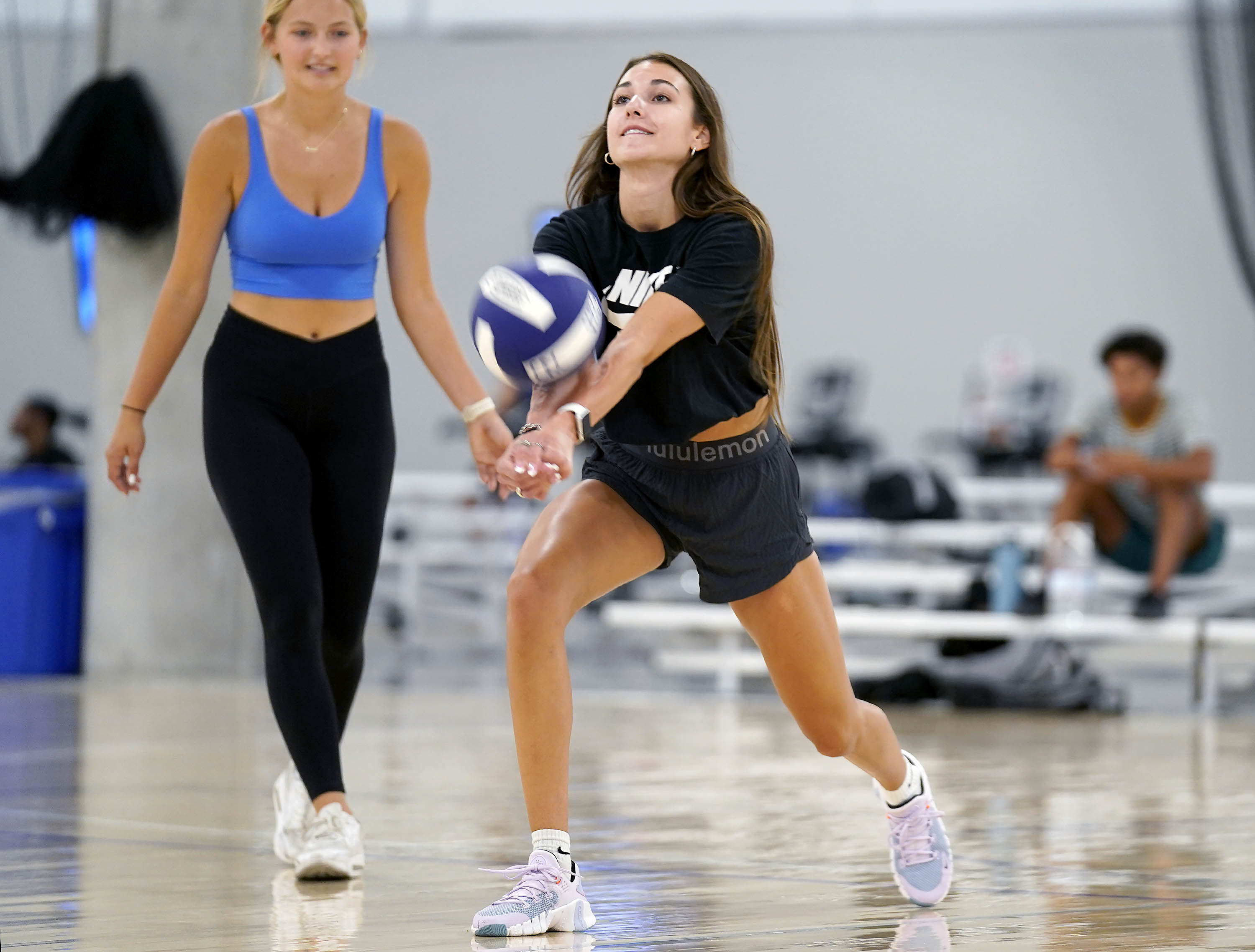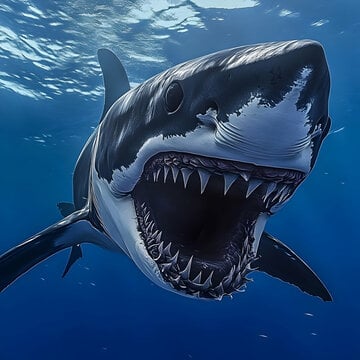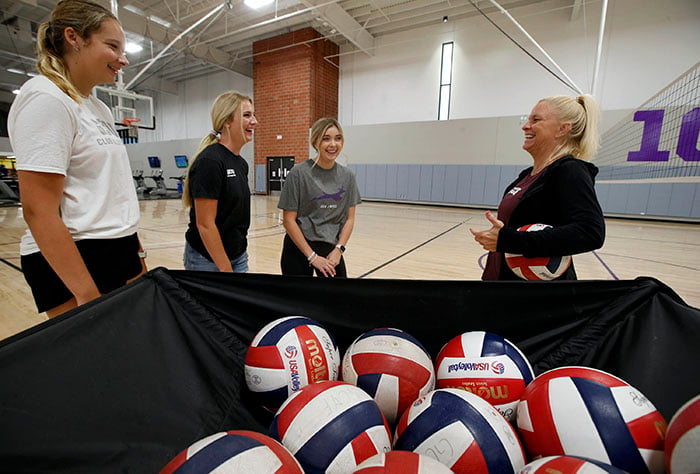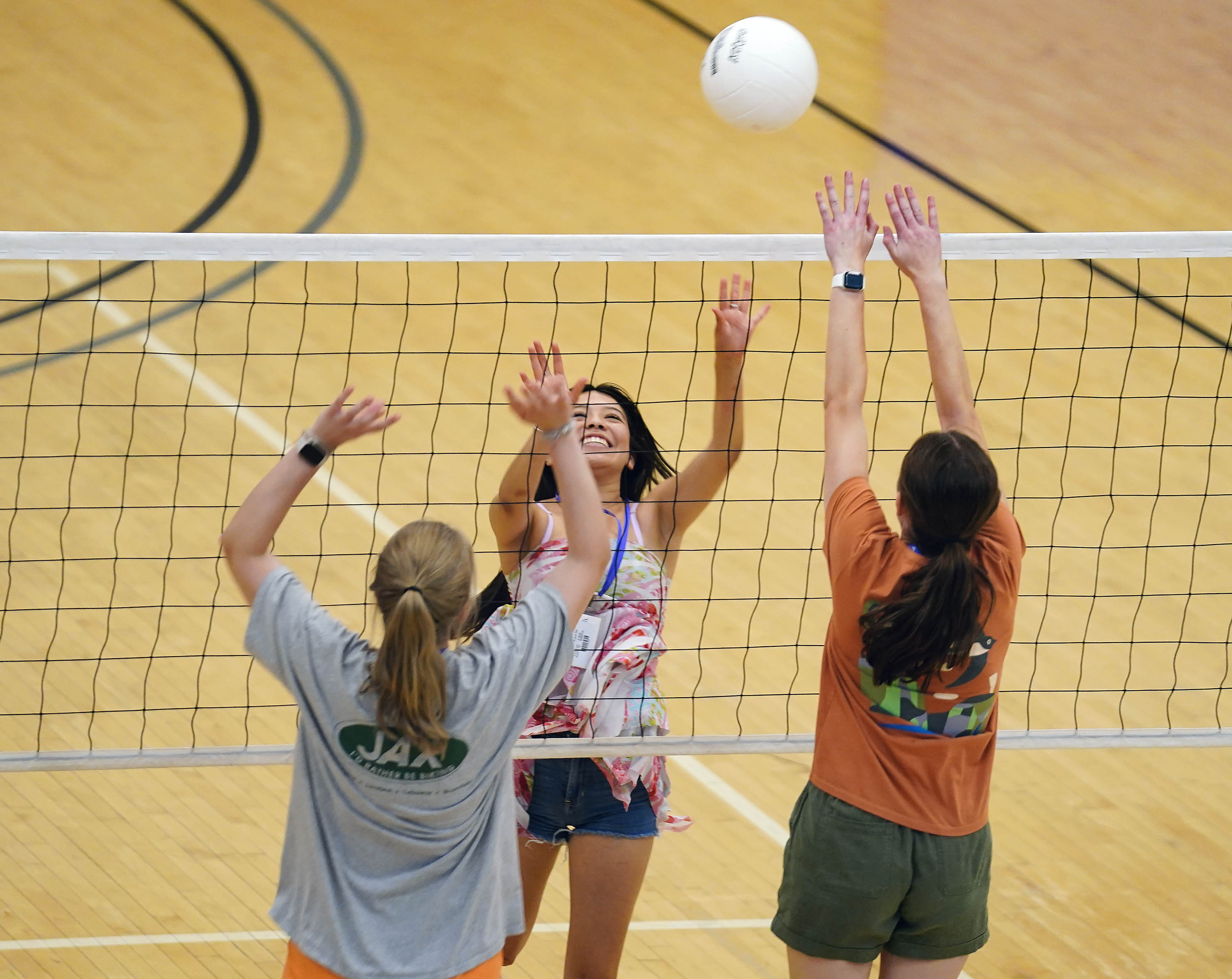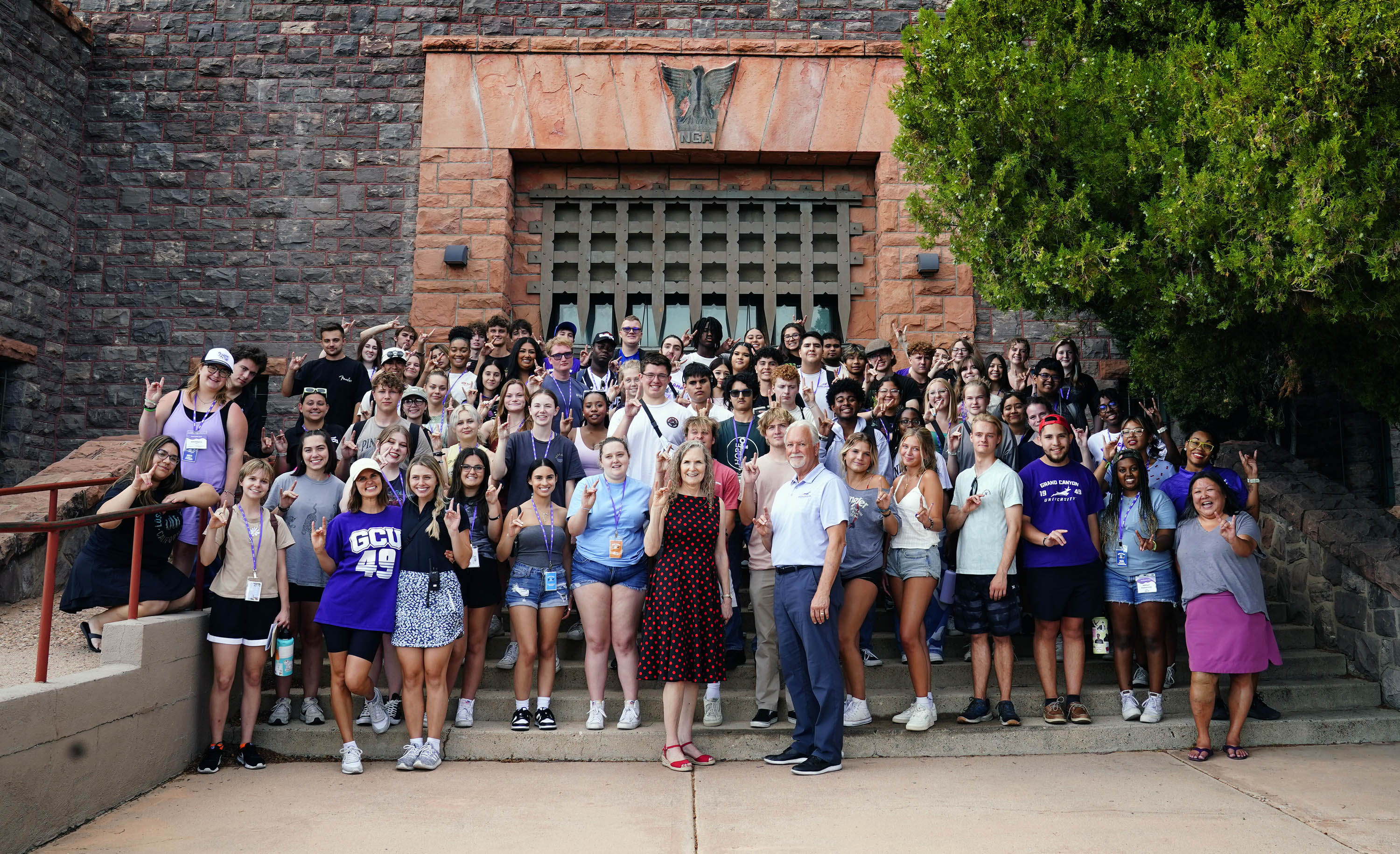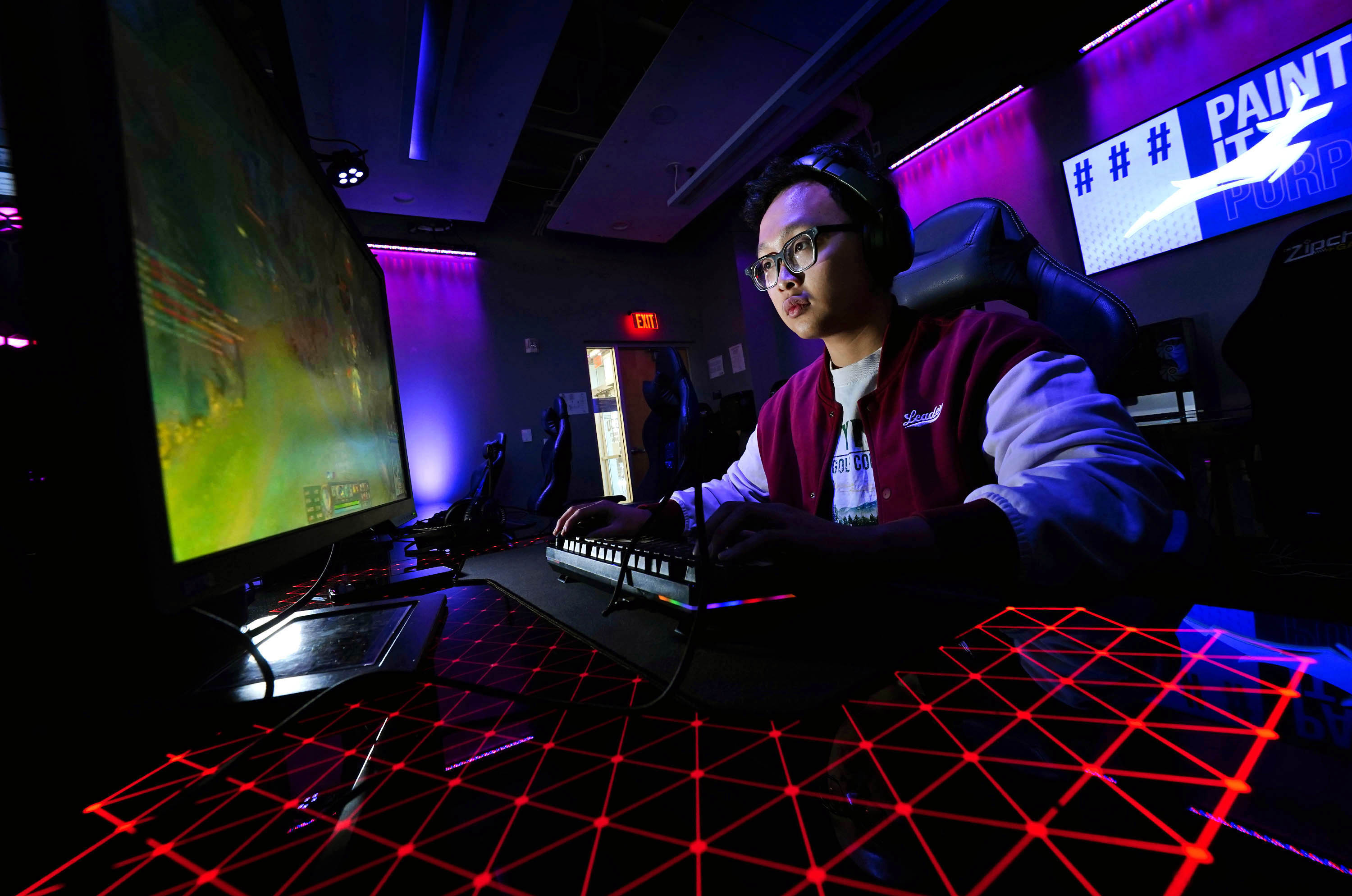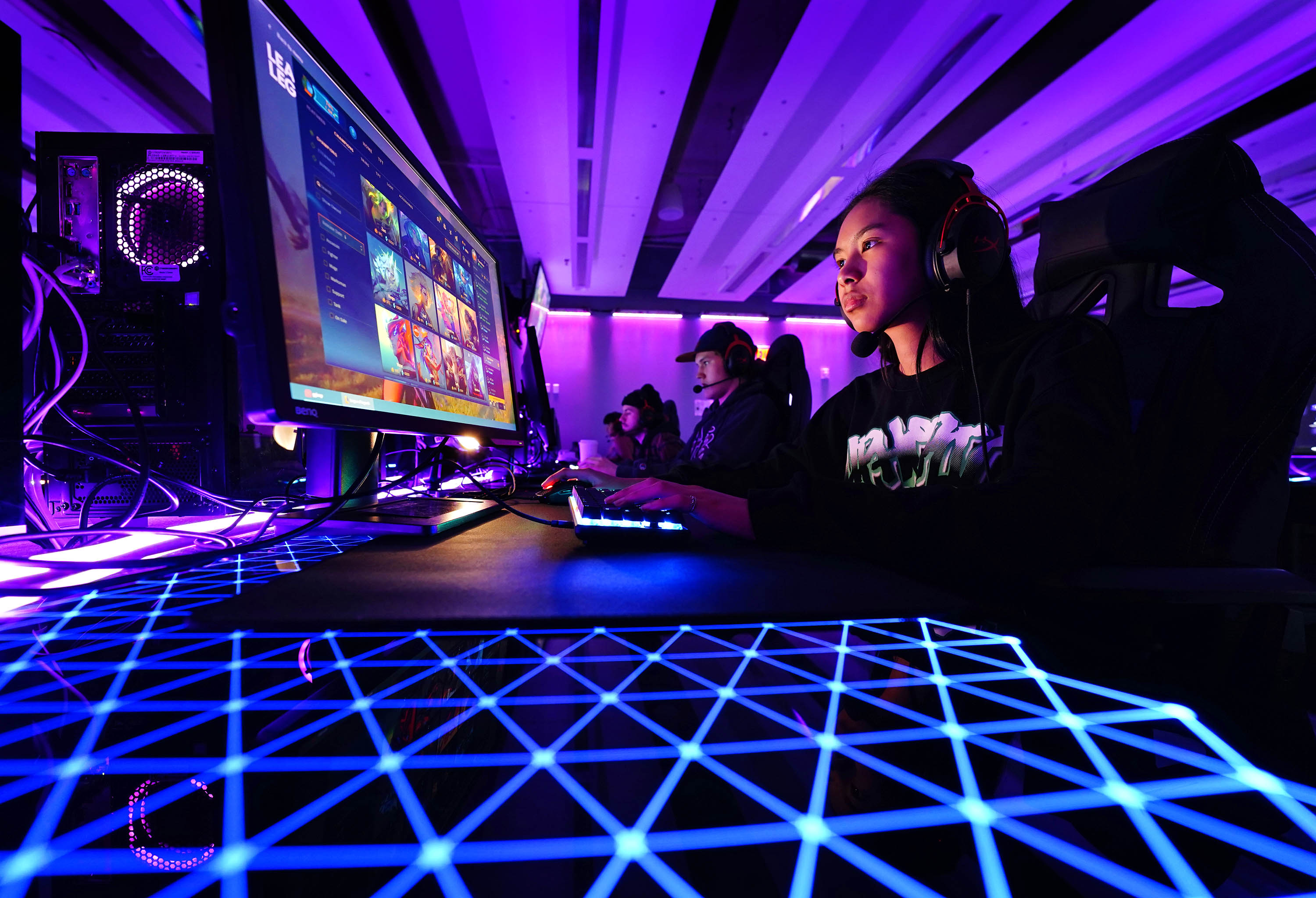
By Lana Sweeten-Shults
GCU News Bureau

Allie Shellaberger would have missed it.
THE clue.
But there it was: a wayward shoe print, dimpled into a square patch of dirt surrounding a tree in the courtyard behind the Grand Canyon University chapel on the Promenade.
Was it the perpetrator who left it there, not thinking about the evidence he – or she – was leaving behind? Was he – or she – wearing a Nike or an Adidas or a Vans shoe?
Shellaberger wouldn’t have been clued into that seemingly inconsequential shoe print if not for some of her classmates from Basha High School in Chandler, all of whom joined in the forensic science scavenger hunt, the new activity at Forensic Science Day.

The immensely popular GCU event that started in 2012 (a year after the University’s forensic science program started) attracted about 1,000 high school and community college students to the campus on Tuesday.
They visited with 150-200 GCU students – almost half the University’s Forensic Science Program – who manned booths, led tours and got to skip classes, which were canceled so those students could participate in Forensic Science Day.
Event attendees also listened to talks about forensic dentistry and crime gun intelligence. They toured DNA and cadaver labs, spoke with the Phoenix Police Department’s Special Assignments Unit, watched police dogs charge across the Quad, and suited up in white jumpsuits before making blood spatter patterns in the blood spatter tent.

And, of course, like Shellaberger, they searched for five pieces of evidence placed in various locales around campus.
“It’s something that makes Forensic Science Day a little more interactive,” GCU forensic science student Mackinnie McNamara said of the scavenger hunt.
“It was something we created to mix things up a bit,” Forensic Science Department faculty lead Dr. Melissa Beddow said of the activity.
It wasn’t the only new feature to look for.
Senior forensic science students, as part of their capstone project, manned one of the new booths, the toxicology booth.

It was where one of those students, Tony Rouhotas, spoke about how field sobriety tests – such as the standing-on-one-leg test – are only 65% accurate in determining whether someone might be under the influence of drugs or alcohol. He then pointed out other tests police use in the field, such as pouches containing vials whose contents are used to test if a certain compound might be a drug. Those tests give police a “presumptive positive,” and suspects are then tested further after an arrest to confirm that presumptive positive.
“It’s fun to teach the kids and teach them more background (of what goes into forensic science). … It can take years to build a case,” said Rouhotas, who wants to go into toxicology.
What he loves about how GCU teaches forensic science, he said, is “how hands-on all the various labs are.”
In one of his classes, he said, the professor gave the students stained shirts. They were told to use whatever test they wanted to use to reveal the makeup of those stains.
“And (in class) we’re quantifying our own DNA,” Rouhotas said. The test involves determining the amount of DNA present in a sample. Some forensic tests require a certain amount of DNA to be successful.

Senior forensic science student Olga Torres talked to Forensic Science Day attendees about graphology, or the study of handwriting. While it isn't a true forensic discipline, it's something investigators can use to create a profile of an unknown person. Graphologists don't do handwriting comparisons but can pull out information about a person based on how they form their letters, spacing between letters and general handwriting habits.
“Graphology has been used in a few cases, like the Zodiac Killer case,” she said and added how she and her classmates got to analyze their own handwriting in class.
It was at the impression/tool mark evidence booth where high school students were asked to match six different shoes to shoe impressions pictured in a series of photographs and accompanying shoe casts.
“You guys have one right right now,” Katie Iverson, a senior forensic science major, said to a group testing their skills.
The activity, GCU student Allyson Redman said, was something she and her fellow forensic science capstone cohorts knew would be interactive and fun.

Added Bryanne Newberry, who also manned the impression/tool mark evidence booth, “It gets them more interested in this major.”
Newberry said it was important to show young students that forensic science is very different from TV crime shows. Cases often aren’t solved as fast and conveniently as they are on TV.
Forensic Science Day visitors who dropped by the Phoenix Police Department’s Special Assignment Unit (the SWAT team) booth got to see some of the tools the team uses, such as 30-pound shields for crowd control and a “break and rake tool,” used to break windows.
Inside GCU Arena, visitors could listen to talks, such as one by Erin Hickson, a forensic scientist in the Phoenix Police Department Crime Laboratory.
She said she worked for a veterinarian but hated it and applied to the Phoenix Police Department after speaking with a friend who worked for 911.

After getting her foot in the door at the department, she moved from lab technician to the firearms section, where she’s a forensics firearms examiner.
But she also is a forensic artist.
What she draws is based on a memory of what a victim remembers: Oftentimes, “It’s not perfect,” she said, but for some reason, something in those drawings – some feature -- will resonate with a police investigator or someone in the public who is able to identify a suspect based on those drawings. “All it takes is that one little thing.”
Hickson showed a composite drawing of a suspect based on the memories of a young teenager who was raped. That suspect, in the end, turned out to be the victim’s mom’s new boyfriend and was apprehended, in part, because of her drawing.
Being able to help victims, she said, is amazing. “It’s very satisfying to know it (the composite drawings) can help an investigation.”
Natalia Horta, a Phoenix Maryvale Preparatory Academy ninth grader, said her favorite part of Forensic Science Day was the fingerprint booth, while her classmate, Nayeli Aguilar, said she loved touring the cadaver lab.

Katie Dodge, a college counselor at Maryvale Prep, said Forensic Science Day was a way to open a world of options to students who might be thinking of their next steps after high school. In forensic science alone, there are so many career pathways.
The goal of Forensic Science Day, according to Beddow, is to introduce GCU and its Forensic Science Program to those forward-thinking students. She hoped something might have spoken to students who are considering entering the field.
And, of course, as GCU student Allyson Redman pointed out: “It shows how cool forensic science can be.”
Reach GCU senior writer Lana Sweeten-Shults at lana.sweeten-shults@gcu.edu or at 602-639-7901.
***
Related content:
GCU Today: New booths showcased at Forensic Science Day
GCU Today: Photography a focus for forensic science students
GCU Today: Bones of the matter: Beddow talks forensics

